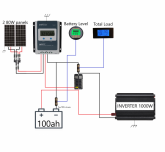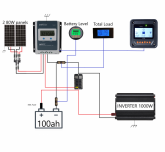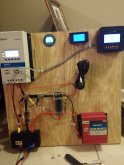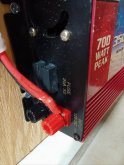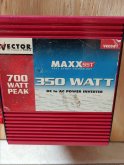Brewman
Solar Enthusiast
- Joined
- May 16, 2020
- Messages
- 511
This is my first read draw up of what I'm wanting to build that will eventually go into a teardrop style camper. The load will be small, 12V fridge, 12V lighting, 1000W inverter (seldom used), 12V water pump (seldom used), USB ports (phone, tablet charging).
Parts List:
PV Two BP Solar 80W (on hand) Will upgrade as required.
SCC EPEVER Tracer 3210AN (Large enough for any load additions)
Battery To be determined.
Inverter Thinking 1000W Pure Sign Wave
As the pic shows, I have two meters shunted in. One is a battery meter for battery level. The second is wired off the fuse box for total load metering.
Please take a look and let me know if you see any problems in my connections and setup.
Dan
Parts List:
PV Two BP Solar 80W (on hand) Will upgrade as required.
SCC EPEVER Tracer 3210AN (Large enough for any load additions)
Battery To be determined.
Inverter Thinking 1000W Pure Sign Wave
As the pic shows, I have two meters shunted in. One is a battery meter for battery level. The second is wired off the fuse box for total load metering.
Please take a look and let me know if you see any problems in my connections and setup.
Dan



